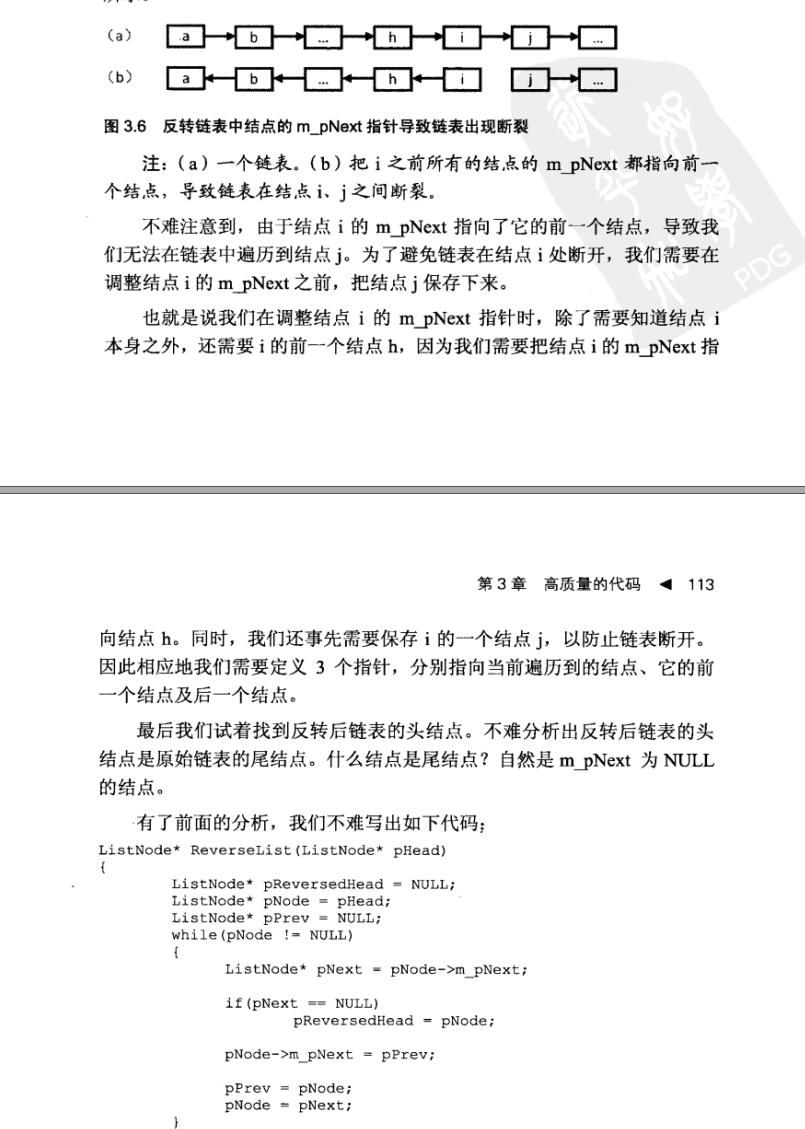Given a linked list, reverse the nodes of a linked list k at a time and return its modified list.
k is a positive integer and is less than or equal to the length of the linked list. If the number of nodes is not a multiple of k then left-out nodes in the end should remain as it is.
You may not alter the values in the nodes, only nodes itself may be changed.
Only constant memory is allowed.
For example,
Given this linked list: 1->2->3->4->5
For k = 2, you should return: 2->1->4->3->5
For k = 3, you should return: 3->2->1->4->5
反转链表:
思路1 : 建立一个新链表
思路2 : 三个指针加记数翻转
#include <iostream>
using namespace std;
struct ListNode {
int val;
ListNode *next;
ListNode(int x) : val(x), next(NULL) {}
};
class Solution {
public:
ListNode* reverseKGroup(ListNode* head, int k) {
if (head == NULL || k == 1)return head;
ListNode * H = new ListNode(0);
H->next = head;
ListNode * begin, *p = NULL, *q = NULL;
ListNode * visitHead = H;
ListNode * countVisit;
int count;
while (visitHead->next != NULL)
{
begin = visitHead->next; // visitHead 为每k个节点的第一个节点
countVisit = begin;
count = 1;
if (!isListKNumber(begin, k)) return H->next; //判断末尾是否还有k个节点,不够直接返回
while (count < k)
{
if (count == 1){
p = countVisit->next;
}
else
{
countVisit = p;
p = q;
}
q = p->next; //保存下一个节点
p->next = countVisit; //翻转一个节点
++count; // 翻转次数加1 , 翻转达到K次,退出本轮
}
begin->next = q; // 第一个节点的next 为 最后一个节点的next
visitHead->next = p; //处理本轮K个节点的最后一个节点,为前一轮最后一个节点的next
visitHead = begin; // 转移到本轮最后一个节点 , 方便下一轮的循环
}
return H->next;
}
private:
bool isListKNumber(ListNode * head, int k)
{
int len = 1;
while (len <= k && head != NULL)
{
head = head->next;
len++;
}
if (len > k) return true;
else return false;
}
};
int main()
{
ListNode * p1 = new ListNode(1);
p1->next = new ListNode(2);
p1->next->next = new ListNode(3);
p1->next->next->next = new ListNode(4);
p1->next->next->next->next = new ListNode(5);
Solution a;
ListNode * p = a.reverseKGroup(p1,3);
while (p != NULL)
{
cout << p->val << " ";
p = p->next;
}
cout << endl;
system("pause");
return 0;
}























 783
783

 被折叠的 条评论
为什么被折叠?
被折叠的 条评论
为什么被折叠?








